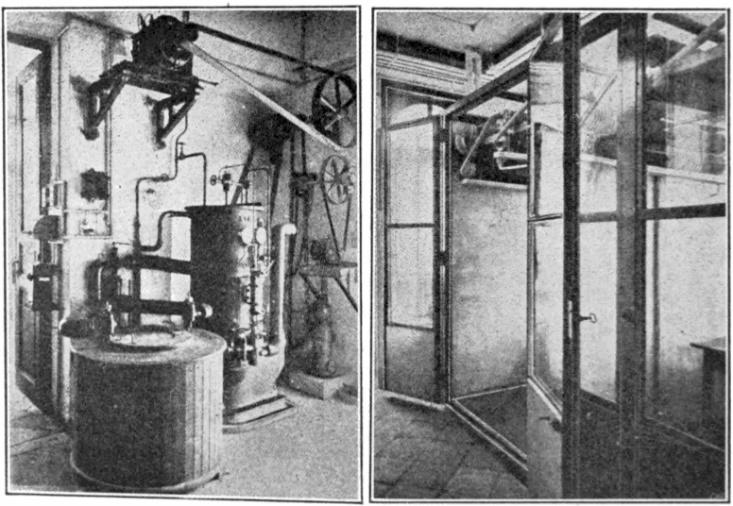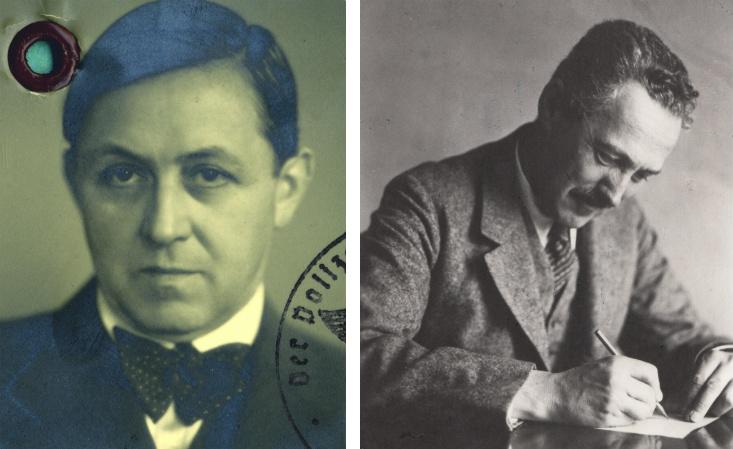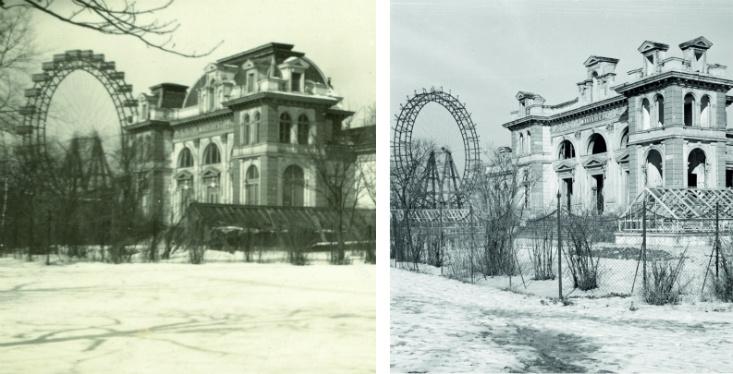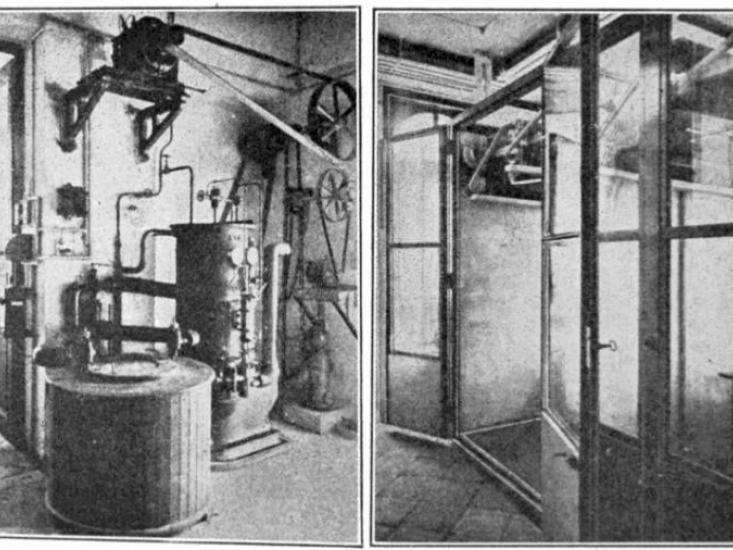In 1911, Popular Science Monthly published an enthusiastic description of a young, private experimental-biology institute in Vienna, lauding its “remarkable scientific productivity resulting from only eight years of research.”
The author, zoologist Charles Lincoln Edwards, attributed the success of the Biologische Versuchsanstalt (Insitute of Experimental Biology) to its many advanced experimental devices. The institute, popularly known as the Vivarium, boasted a wide range of terrariums, which housed hundreds of organisms, from glow-worms to kangaroos, at strictly controlled temperatures, humidity, pressure, and light levels. That wasn’t always easy—the Vivarium had to adopt or invent many cutting-edge technologies, including an early air-conditioning system. It was “a pioneer in the use of the carbonic-acid cooling machine for maintaining a cold environment,” wrote Edwards. With the help of circulating salt water and a condenser, four rooms were kept at temperatures ranging from 5°C to 20°C.
The idea of using various apparatuses to control the living conditions of plants and animals for study was new; before that, scientists mainly observed their subjects in nature. At the Vivarium, the focus was on raising many generations under the same conditions in order to probe questions of heredity and development—a unique approach at the time, and one that many consider a precursor to today’s research on evolutionary developmental biology, or “evo-devo.”

“They were not just taking an organism, experimenting on it, and then basically realizing that it might die and that’s the end of it,” says Manfred Laubichler, a theoretical biologist and historian of science at Arizona State University. “They tried to maintain those organisms for multiple generations in order to study the long-term effects of those influences and of variations that might actually show up.”
The institute’s approach gained quick appreciation from Edwards and other researchers. A professor at the Rockefeller Institute, in New York, wrote a congratulatory letter to the founders, calling it “the leading place in biological research.”
But while the Vivarium was pushing ahead the limits of biology research, dark storms were brewing in Europe. The institute’s founders, who were all of Jewish backgrounds, had no inkling of the enormous political upheaval that would engulf the continent. They had no idea how profoundly their country and fellow scientists would betray them while in thrall to a young failed artist who, at the time of Edwards’ article, was living in a home for poor men, not two miles from the Vivarium. His rise to power would eventually consume the Vivarium, destroy its work, and bring the untimely deaths of many of its leading researchers.

When the Vivarium’s founders came up with the idea for a research facility pursuing experimental biology, it could not find a home at a traditional university. “Universities are basically conservative institutions,” Laubichler says, and they couldn’t keep up with scientific developments, including experimental biology. So, starting in the late 1800s, a new type of research institution arose separate from the university. The Vivarium was part of that trend, along with the Marine Biological Laboratory in Woods Hole, Mass.; the Stazione Zoologica in Naples, Italy; and the Kaiser Wilhelm Institutes in Germany; among many others. “Such institutions as this of Vienna will do much to solve the great problems of biology,” Edwards predicted.
Many of those institutions had origins similar to the Vivarium, in the ambitious visions of people with means. The pseudo-Renaissance building that housed the Vivarium started its life as an aquarium built for the 1873 World’s Fair. In 1902, zoologist Hans Przibram and botanists Wilhelm Figdor and Leopold von Portheim bought and transformed it into the world’s first institute dedicated to experimental developmental biology. Przibram served as its longtime director.
Unlike the universities, which were conservative and provincial, this new breed of institute was international and interdisciplinary. The Vivarium housed workspaces that external, often foreign, scientists could rent for months. And Vivarium scientists went abroad at high rates, exchanging ideas with laboratories in Germany, the United Kingdom, and the United States. One of the Vivarium’s most famous sons, biologist Paul Weiss, went to Yale University, the University of Chicago, and Rockefeller University, ultimately settling in the United States.
Despite—or perhaps because of—this constant feedback of ideas, many of the institutes maintained distinctive takes on research. But it was the guidance of someone very local—the director’s brother, physicist Karl Przibram—that may have influenced the Vivarium’s approach the most. Hans and Karl’s regular discussions, held often during Sunday walks outdoors, helped Hans envision new ways to quantify biological results. “In physics, [Hans] explained, measurements on a falling body would yield the law that velocity was independent of an object’s mass only on the condition that the experimenter could eliminate air resistance. In order to arrive at biological laws akin to physical laws, it was thus imperative to ‘master’ the environment,” writes historian Deborah Coen. “The convergence of the life sciences and the ‘exact’ sciences at the Vivarium would have been unthinkable without the collaboration of the Przibram brothers.”
More than most of his generation, Hans “wanted to make biology into an exact science,” says Gerd Müller, a theoretical biologist at the University of Vienna and chair of the Konrad Lorenz Institute in Austria. “That is probably its greatest legacy…the theoretical foundation of biology.”
In 1914, the founders donated their beloved institute to the Academy of Sciences, along with a large endowment, while remaining in their positions. They thought they could have the best of both worlds—a private-public partnership of a sort.
Unfortunately, we’ll never know how far Przibram and the Vivarium could have taken their vision. It’s possible the Vivarium wouldn’t have thrived even if it had survived the war. In the interwar years, several scandals, including a still-debated allegation of scientific fraud, tainted its reputation.
But none of that mattered once Nazi Germany annexed Austria in March 1938. Nazi sympathizers within the Academy of Sciences rose to positions of authority over the Vivarium, especially botanist Fritz Knoll, who also became head of the University of Vienna.

By early April 1938, Knoll and his collaborators locked the founders out of the Vivarium and removed them as signatories to the funds that they themselves had donated. The building was temporarily closed under the twisted pretense of “cleaning work,” only to be reopened without any of its department heads and down two-thirds of its staff.
At the end of the war, the park around the Vivarium was the site of heavy shelling; the Vivarium burned out in 1945 and would never be restored.

The human loss was enormous. The Vivarium was, “relative to its size, the research institute in Austria and the German Reich with the most victims of National Socialism,” writes journalist Klaus Taschwer in an article in a new scholarly book. Many of the Vivarium’s scientists left Austria and picked up their scientific careers in other countries, but Przibram and his wife, along with many connected to the Vivarium, perished in camps. “It was of course a tremendous personal loss of highly trained people who were brilliant and disappeared from the scientific scene,” says Müller.
The memory of the Vivarium was also nearly lost. “The same people were still in the academy and in the university after the war, and hence had no interest in keeping the memory of that institution alive,” Müller says. Knoll himself, back at the academy despite his Nazi activities, edited a sort of encyclopedia of Austrian scientists. He did not include Przibram or any of the scientists from the Vivarium in it, although they had once been among the most prominent in Austria, Taschwer notes.
But in the past decade, historians and scientists both in and out of Austria have begun to recognize that theoretical biology “owes a debt to the Vivarium for its concept of systems, its cross-disciplinary structure, and its synthesis of evolution and development,” Coen writes. Vivarium scientists may have had been getting an early handle on epigenetics and neuroendocrinology as well. In February a symposium on the Vivarium, co-sponsored by the Konrad Lorenz Institute, took place at the Academy of Sciences, which is also planning a small exhibit on the Vivarium for later this year, so that Austrians will again be aware of what is missing.
The turn of the century saw “a revolution of scientific thought, organization, and funding,” said Kate Sohasky, a graduate student in history at Johns Hopkins University, at the symposium. The Vivarium—a strange wonderland of plants, animals, climates, and apparatuses—was at the center of it, a rare place where research could break free of history, at least until history caught up with it again.
Chelsea Wald is a freelance science writer and editor who lives in Vienna.



